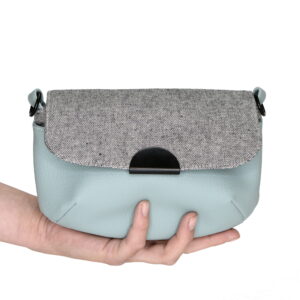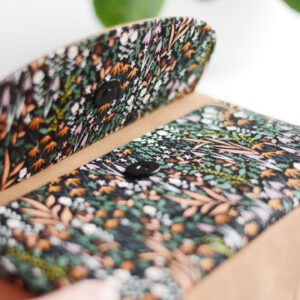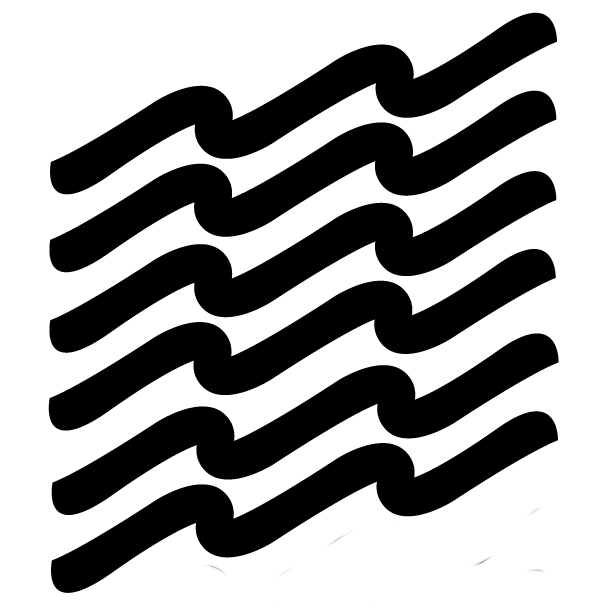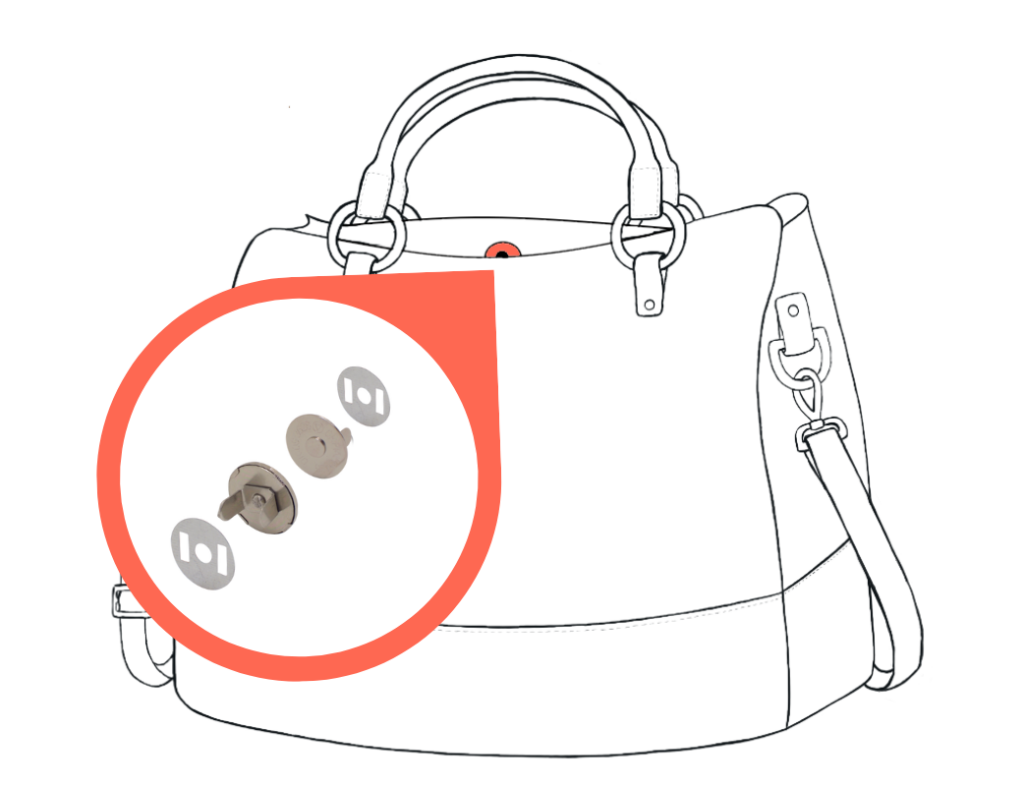
an essential bag closure
A magnetic snap is one of the easiest and most widely used bag or wallet closures.
Depending on the design, a magnetic closure can be completely hidden, only visible at the inside of the bag, have a modest ‘button style’ look or be defining in the overall look of the bag.
The core of a magnetic snap is usually made of a strong, permanent magnet. This magnet is what provides the closure strength and holds the two snap halves together.
These 2 halves are (usually):
Female part: Part with recessed center. The magnet resides inside the female part of the snap.
Male part: Part with raised center.
It is also referred to as: magnetic closure, magnetic button, magnetic clasp
When you buy a magnetic snap, the size that is indicated refers to the diameter of the button, 14 and 18mm are bot very common sizes.
The thickness may not always be mentioned (and to be honest, it is not that important), but when slim or thin is indicated, this refers to a flat 2mm magnet, with 4mm being the standard style.
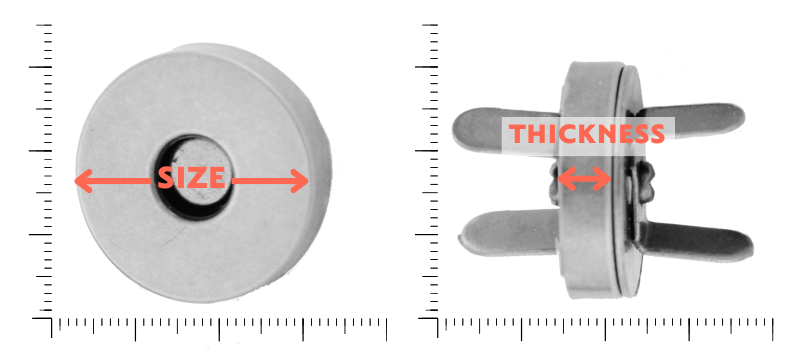
FAQ
Question: What other factors are important to consider?
Answer:
Closure Strength: The magnet’s strength determines how securely the snap holds the bag closed. Stronger magnets provide a more secure closure, which is important for bags that carry heavier or valuable items. Weaker magnets may be suitable for lighter bags.
Ease of Opening: While a strong magnet provides a secure closure, it can also make it more challenging to open the snap, especially for individuals with limited hand strength. So, it’s important to strike a balance between strength and ease of use.
Bag Weight: Consider the weight of the bag and its contents. Heavier bags may require stronger magnetic snaps to ensure they stay closed even when the bag is full.
Quality: The quality of the magnet itself is crucial. High-quality magnets are less likely to lose their magnetic strength over time, ensuring the longevity of your bag’s closure mechanism.
Testing: If possible, test the magnetic snap before purchasing or using it in your bag project. This can give you a better sense of its closure strength and how easy it is to open and close.
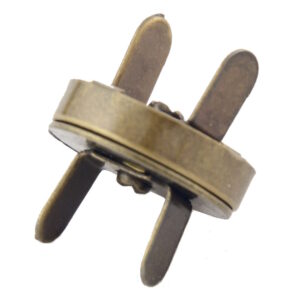
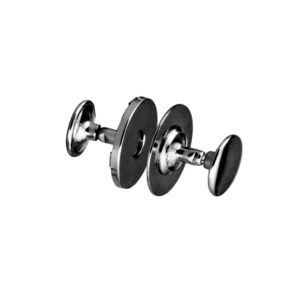
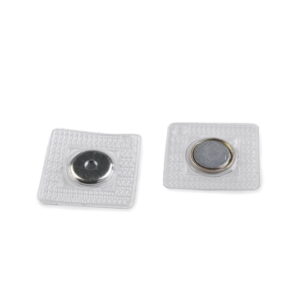
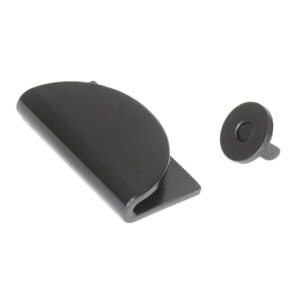

Prepare - Reinforce spots - Use washer to mark the spots where you will make slits to insert magnet
step 1

Cut 2 slits - Insert prongs - Place washer over prongs to prevent tearing later on because of magnetic force
step 2

Bend down the prongs - Repeat for other half - Finished
step 3
